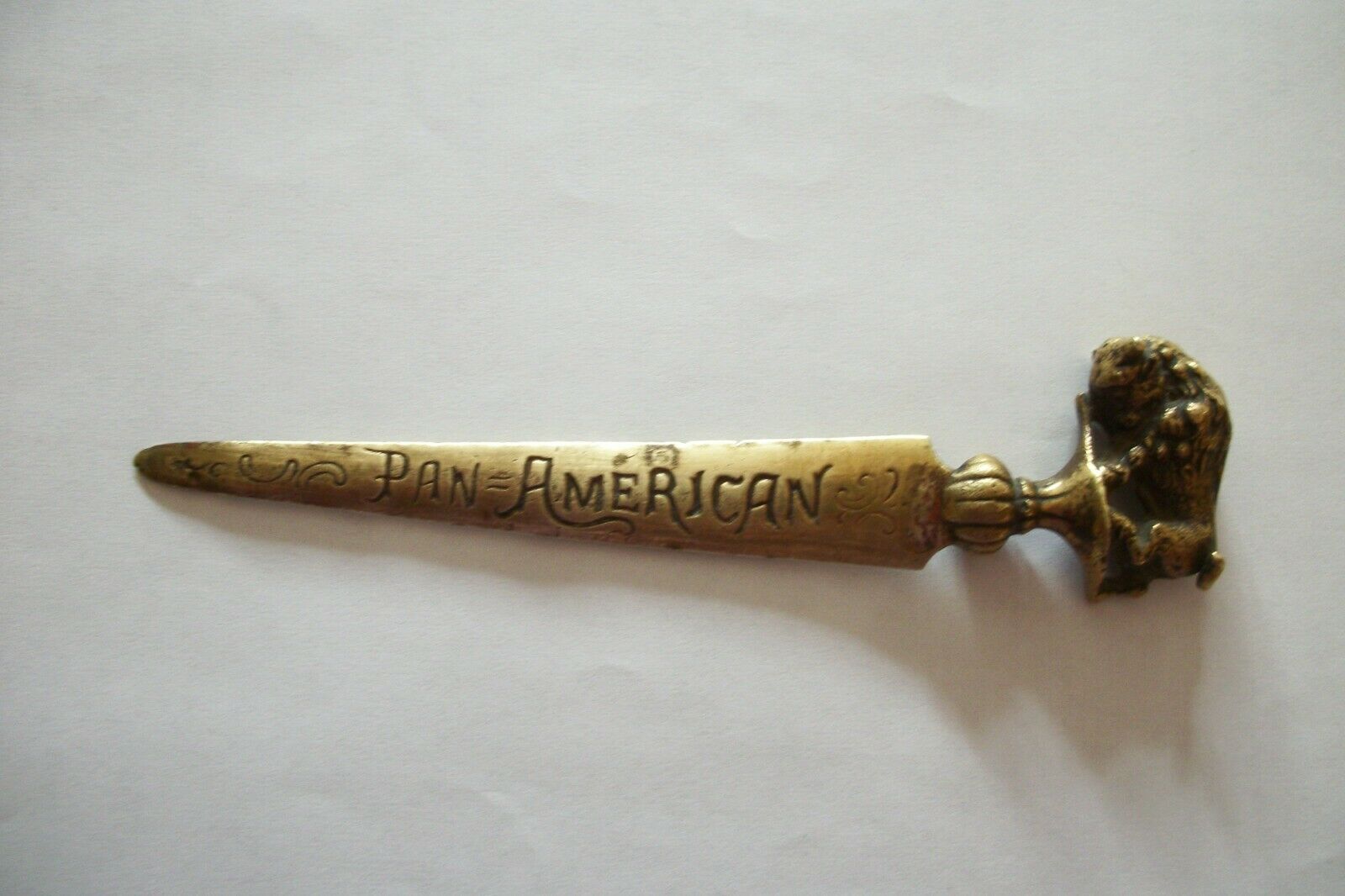-40%
Way Cool 1901 Pan American Exposition Photo
$ 21.12
- Description
- Size Guide
Description
This is a candid…I believe must have been taken from the Electric Tower, with the focus down the midway with attendees milling around…can see Johnstown Flood , Darkest Africa, etc…great angle not often shown on internetNote crunch upper left…does not take away from picture
Photo applied to card stock photo 5x4…card slightly larger
As found
4th pic NOT included…just to help illustrate portion of expo
From Wikipedia:
The Pan-American Exposition was a World's Fair held in Buffalo, New York, United States, from May 1 through November 2, 1901. The fair occupied 350 acres (0.55 sq mi) of land on the western edge of what is now Delaware Park, extending from Delaware Avenue to Elmwood Avenue and northward to Great Arrow Avenue. It is remembered today primarily for being the location of the assassination of United States President William McKinley at the Temple of Music on September 6, 1901. The exposition was illuminated at night. Thomas A. Edison, Inc. filmed it during the day and a pan of it at night.
History
Planning of the Exposition.
The event was organized by the Pan-American Exposition Company, formed in 1897. Cayuga Island was initially chosen as the place to hold the Exposition because of the island's proximity to Niagara Falls, which was a huge tourist attraction. When the Spanish–American War broke out in 1898, plans were put on hold. After the war, there was a heated competition between the cities of Buffalo and Niagara Falls over the location. Buffalo won for two main reasons. First, Buffalo had a much larger population; with roughly 350,000 people, it was the eighth-largest city in the United States. Second, Buffalo had better railroad connections; the city was within a day's journey by rail for over 40 million people. In July 1898, Congress pledged 0,000 for the Exposition to be held at Buffalo. The "Pan American" theme was carried throughout the event with the slogan "commercial well being and good understanding among the American Republics." The advent of the alternating current power transmission system in the US allowed designers to light the Exposition in Buffalo using power generated 25 mi (40 km) away at Niagara Falls.
——————————
From the Buffalo Times, May 4, 1901:
"One of the most novel and interesting attractions of the Pan-American Exposition is the scenograph of the Johnstown Flood, by E. J. Austen, artist, Albert E. Swift and Randolph McNutt, concessionaires. The great catastrophe, which cost thousands of lives and horrified the world in 1889, is represented with a wonderfully realistic fidelity. The scenograph combines all the best features of the cyclorama, the diarama and the scenic theater, with the addition of amy unique and novel features which absolutely complete the illusion and give life and movement to the scene.
Mr. Austen is the foremost cycloramic artist of the world, in the opinion of those best qualified to judge. In the preparation of the great scenograph he was assisted by a large staff of noted artists, chief among whom were Charles A. Corwin, Frank C. Pepraud and Herbert V. Brown. In producing the marvelous mechanical effects, E. S. Shea of New York had a prominent part. He is the originator of many devices now being used in the prominent theaters of this and other countries. Herbert A. Bradwell, the electrician, stands at the head of his profession as a producer of novel effects. Many of those in the Johnstown Flood have never been seen before.
The flood is reproduced in the scenograph with details absolutely true to the history of the great calamity and with such striking effect that the beholder is filled with wonder and admiration for the achievement of man's ingenuity, if he can keep in his mind the fact that hte original tragedy is not being enacted before his very eyes.
A story has been prepared for delivery in words which is the exact historical record and a dramatic recital of the awful disaster of the Conemaugh."












